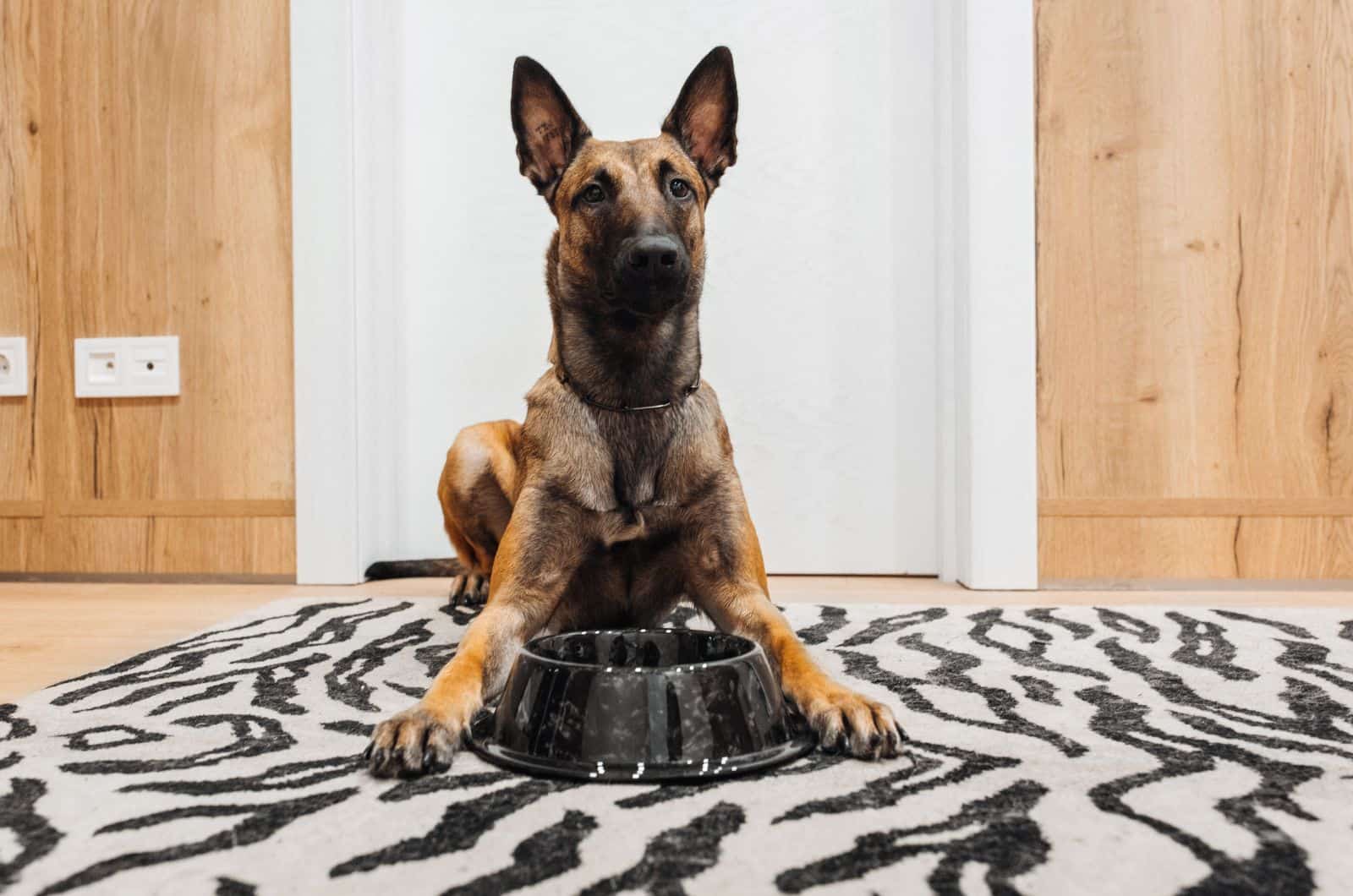Owning a dog is a lot of fun, but it also comes with a great deal of responsibility. That is particularly the case if you have a Belgian Malinois, a breed that requires a lot of exercise and carefully planned nutrition. In this article, we will outline several reasons why we think that homemade dog food for Belgian Malinois is the best diet out there.
Mals are a very popular dog breed and for good reason. They are a large breed dog with a muscular build, standing at around 22 to 26 inches (55 to 66 cm) once they reach adulthood. They have hair with colors spanning from fawn to red and brown.
An extremely intelligent dog breed, Belgian Malinois are strongly devoted to their families, and usually live up to 14 years of age. However, in order to experience such a long and healthy life, they need to have a healthy and nutritious diet.
Homemade Dog Food For Belgian Malinois Recipe
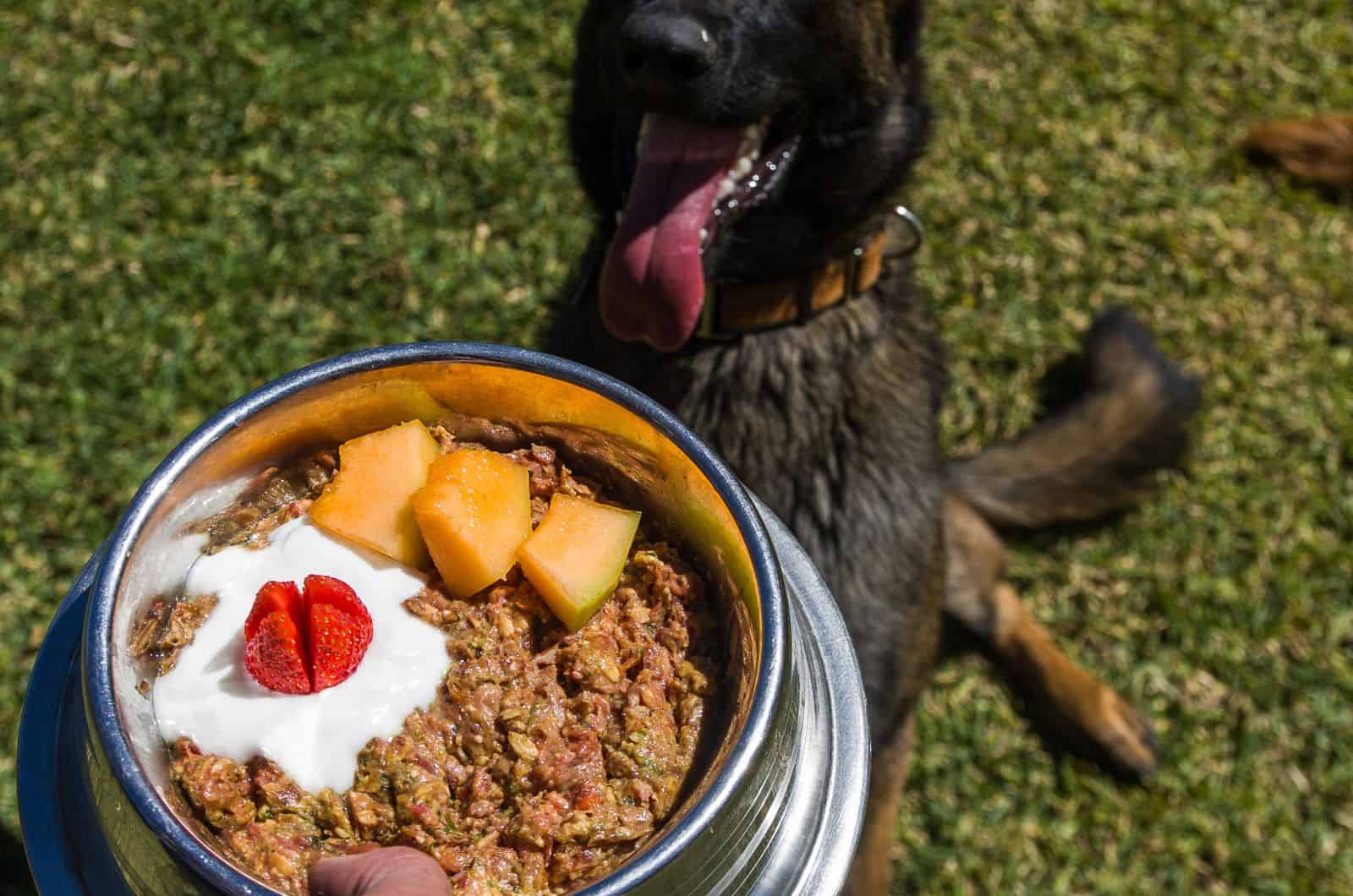
Before we start getting into why homemade dog food is the best option for your Belgian Malinois, here is a quick recipe.
This is an easy-to-make ground sirloin veggie meal that you can prepare for your mal in 20-30 minutes, and it’s a great starting point until you learn some new recipes.
Tasty Ground Sirloin Veggie Recipe
Before you run to the kitchen and get started, please make sure that you understand your dog’s nutritional needs, and any particular special conditions they might have, like allergies or food intolerances.
We will be talking about these things further along in the article, but consulting your vet is always a good idea.
Now that we’ve got that out of the way, here comes the recipe!
What You’ll Need
• 6 cups of organic brown rice
• 2 lbs. of ground lean sirloin
• 4 hard-boiled eggs
• 3 carrots
• 1/4 or 1/2 of a cup of fresh parsley or other dried herbs
• 3 tablespoons of olive oil
How To Make It
Get the eggs cooking first, and then start boiling the rice. While that is going on, you can brown the sirloin, and collect all the veggies and other fresh ingredients.
The entire process should take you no longer than half an hour, and it should produce around 13 cups worth of ready-to-go dog food. Just make sure to store it properly so that it can last.
We suggest that you put it into a large enough container and stir it so that it sticks together. Seal it tightly and put it in the refrigerator until the next meal time.
Benefits Of Homemade Dog Food For Belgian Malinois
There is nothing quite like a nice home-cooked meal at the end of a long day. And the same is true for your dog, as well.
The benefits of making homemade food for your dog are hard to overstate, as more and more studies and real-world examples are showing just how much healthier it is than relying purely on kibble and wet food cans.
For example, you can even make a vet approved homemade dog food for kidney disease by yourself!
If you’re not sure about how exactly you can start cooking for your dog, then fear not — the internet is full of examples so you’re only a Google search away from finding your Mal’s favorite new meal.
But before that, let’s focus on the actual benefits that a homemade dog food diet brings to your Belgian Malinois. As we said, there are many of them, but we’ve roughly divided them into three main categories: quality control, affordability, and health benefits.
Just one quick reminder: we suggest you take a look at our Belgian Malinois feeding chart to get a real insight into this dog’s nutrition needs.
Quality Control
Recent research has shown that dogs whose diets consist of fresh food have a 20% longer life expectancy than those who don’t. That is a fairly intuitive, common sense claim, but it gains a lot of extra gravity when it’s backed by science and facts.
Combing through shelves of stores selling dog food to try and find the one that contains all-natural ingredients and fits your dog’s feeding regime is next to impossible, so it’s nice when you can take the matter into your own hands.
When you prepare the meals for your Belgian Malinois yourself, you can hand-pick the ingredients and be certain of their freshness and quality. You can ensure that the stuff you are using doesn’t have any unnecessary chemicals, additives, fillers, or allergens.
Individualized Diet
The level of precision and care that you can undertake while preparing these meals can never be matched by a random bag of kibble from your local supermarket, no matter how expensive or well-known it is.
Think about it like this: commercial dog food brands make products for hundreds or thousands of different dogs, so even if they go to great lengths to achieve the maximum possible quality, they can never tailor their food to the specific needs of every individual dog.
That would probably be a bad business model for them, wouldn’t it?
But you, on the other hand, have only your own dog (or dogs) to worry about and you can make sure that they only get the best fresh ingredients available.
Affordability
This one probably explains itself but let’s take a minute to think about it.
Belgian Malinois is a highly active dog breed that requires a high daily caloric intake, but not only that — they require high amounts of protein and fat to be able to go about their daily exercise and still keep that muscular frame that they are so well known for.
It would be fair to say that they have quite an appetite.
Belgian Malinois puppies eat four to six meals a day, while adults usually only eat once or twice every day, but over a period of time, that amounts to a lot of kibble.
Buying a dog food that has a high enough level of protein and fat, as well as enough other nutrients to satisfy your dog’s needs — even if you somehow manage to find one that ticks all the boxes — will probably cost you a fortune.
Meanwhile, using ingredients that you probably already have in your fridge or in one of your kitchen cupboards costs you nothing. Well, apart from buying those ingredients in the first place, you would have bought them anyway.
Billions Spent On Dog Food
According to a recent study, six percent of US citizens spend more money on buying food for their pets than they do for themselves. Furthermore, that number is likely to rise, as the total value of pet food expenditure rose by $9 billion (yes, billion with a B) from 2019 to 2020 across the entire United States.
We do love our pets, but there is simply no need for them to be such an expense. Preparing their meals at home reduces those numbers directly, but also has an indirect benefit for your wallet that you might not have thought about.
Veterinary care and product expenses in the USA totaled at $29.3 billion in the year 2019, and we can probably safely guess that it’s even higher now.
It’s only logical to conclude that putting your pet on a fully fresh and natural homemade dog food diet will result in them having better overall health and thus make your visits to the vet less frequent.
Health Benefits
This section kind of leans on the previous one where we discussed veterinary care. But instead of talking about the financial advantages, we are now going to focus on the actual well-being of your dog.
Many veterinary nutritionists agree that a switch from store-bought to homemade dog food brings undeniable health advantages to dogs. Aside from the more general benefits like being able to carefully manage a dog’s diet, satisfy picky eaters or maintain a healthy weight, there are also much more concrete and long-term gains.
Preventing Diseases
Many health conditions that befall canines can be associated with a poor diet, and shifting to homemade dog food has been shown to decrease the risks of many of these conditions, including obesity, skin and coat decay, pancreatitis, diabetes, plus any issues related to allergies, food intolerances or weak immunity.
Risks Of Making Homemade Dog Food For My Belgian Malinois
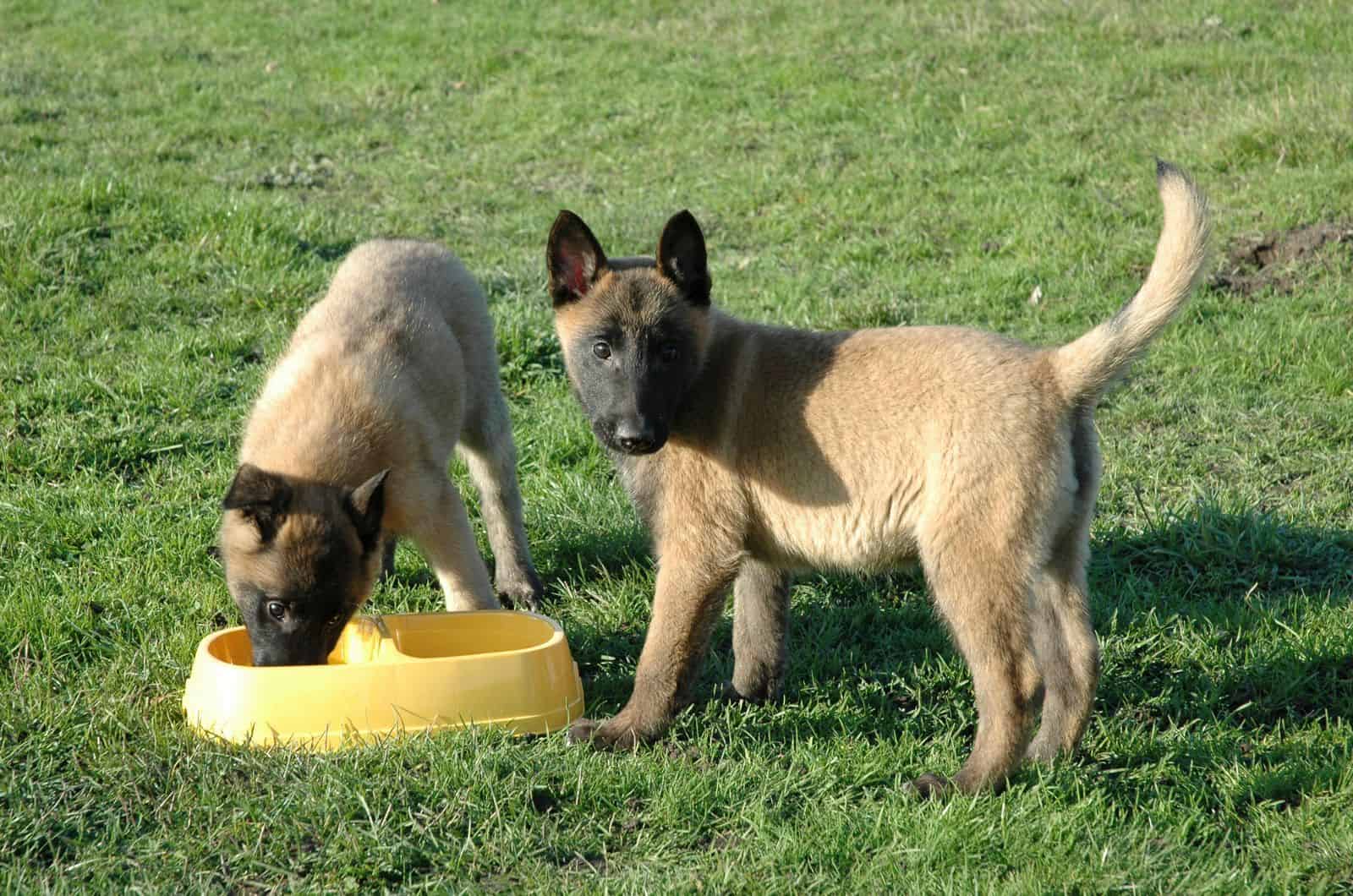
Like with anything in life, switching your Belgian Malinois to a completely homemade diet comes with a certain set of risks. However, all those risks can be taken care of with some research and careful preparation.
Namely, most of the risks come from owners not knowing the nutritional needs of a Belgian Malinois, using unproven recipes, not following them correctly, etc.
So, with that in mind, we wanted to list some quick, but vital pieces of advice that you need to know before taking your dog’s diet into your own hands.
Understand Their Nutritional Needs
First, you need to make sure to learn and fully understand the exact nutritional needs of a Belgian Malinois.
A good homemade diet will take into account your dog’s age, size, weight, health issues, and daily activity level. Do detailed research and consult with experts if necessary, because this is one of the most important steps in creating a healthy diet.
Use The Right Recipes
As we said, the internet is filled with various homemade dog food recipes, but like with everything online, not all of them are correct. Double-check everything and only use the sources you trust.
Take your time to verify everything you read before you jump into it. Once you’ve built up a number of trusted sources, make sure that you stick to them.
It’s no use finding the best recipes if you’re not going to do what they say and improvise instead. These aren’t human food recipes where you can experiment with spices, so ensure that you’ve measured everything correctly and followed the instructions to a tee.
Whether you’re cooking in batches or making a fresh new meal every day, putting in appropriate amounts of all the ingredients is important.
Keep It Balanced
Taking into account the previous two points, use what you’ve learned from them to create meals that will tick all the boxes for your Belgian Malinois and bring them all the nutrients they need.
You’re not likely to make a single meal that will provide them with everything they need, so try rotating your recipes so that they can complement each other and fulfill all their dietary needs on a long-term basis.
Belgian Malinois Nutritional Needs
Since Belgian Malinois is such a large breed with a high activity level, it is no surprise that they require a heavy daily caloric intake to make sure their energy levels don’t drop. Some of the essential ingredients that every mal should have in their diet include animal protein, fat, veggies, probiotics, and carbs.
These five food categories are essential parts of a healthy dog’s diet, and they should provide everything your beloved Belgian Malinois needs to keep his overall health in check. Let’s get into a bit more detail about each of them.
Animal Protein
Animal-based proteins are a key source of nutrition for both Malinois puppies and adult dogs as they help with tissue growth repair.
Whether it is a brand of pet food such as Blue Buffalo that contains these natural ingredients or raw meat such as venison or ground beef, your dog’s diet should include a healthy dose of protein. The important thing is that it comes from real meat, and not some second-grade by-product.
Fat
Active dogs expend a lot of energy every day, and fatty foods are a great way of recharging. Dog food that contains at least ten percent fatty acids helps large dogs like Belgian Malinois or German Shepherds to keep in shape but also improves joint mobility and skin health.
Great alternatives to store-bought dog food are flaxseed oil and fish oil, both of which contain a lot of different Omega-3 fatty acids, most notably DHA. They will add great nutritional value to your pup’s diet without compromising its body weight.
Veggies
Fruits and vegetables sometimes get overlooked in a dog’s diet, but they shouldn’t be! They are, in fact, one of the best sources of vitamins and minerals that they can possibly get, and they play a big role in maintaining a proper calcium-phosphorus ratio in their bodies.
They do wonders for a dog’s bones, brain, and eyes. They are also rich in antioxidants that keep their immune system in top performance. Try feeding your Malinois some kelp and see what happens.
Probiotics
Probiotics are a great addition to any dog’s diet, especially for the ones that have a sensitive stomach.
There are commercial dog foods and dog treats that contain them, but they can also be found in human food, such as yogurt or sweet potato.
Carbs
Similar to fat and protein, carbohydrates are an important source of energy for working dogs, such as Belgian Malinois. They should be a mainstay of your dog’s diet, so why not try feeding them something like brown rice?
It’s packed with carbs but it has a significantly lower glycemic index than white rice, which means it doesn’t have the risk of elevating blood sugar levels. However, be careful with portion sizes, as rice can lead to weight gain in dogs if you’re not careful.
What Not To Feed Your Belgian Malinois
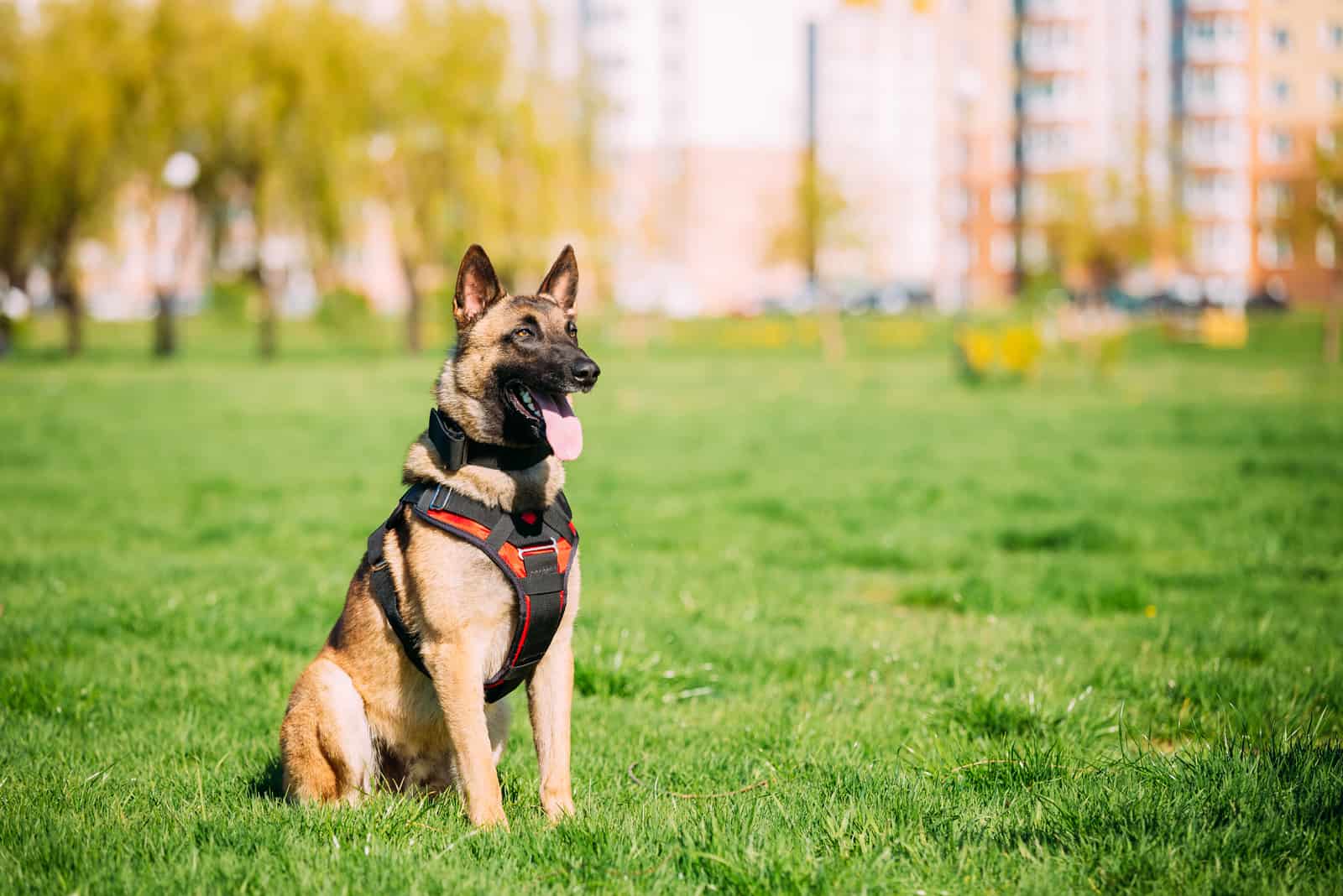
Every dog owner will say that their dog is special and unique, and that is 100% true.
However, even though every dog breed is different and every individual dog is different, there are some general rules of thumb that apply when it comes to feeding your mal that you should keep in mind to avoid any possible health issues.
After all, there are numerous brands of dog food out there, and some of them are unfortunately of very low quality. They might contain fillers or allergens that do more harm than well for your pet, so you should pay extra attention when choosing what to include in your dog’s diet.
Probably the best way to stay in control of this is to make your own homemade dog food for your Belgian Malinois, but if you still decide to buy commercial dog food, there are some things you should be wary of.
The Downsides of Heavily-Processed Commercial Dog Food
The majority of the dog food that you buy in supermarkets and pet stores has been heavily processed.
Processed pet food has its advocates and there are undoubtedly brands and products that are of a high quality, designed to give your pet all the necessary nutrients. Some of them even make their products with human-grade ingredients, but it’s not always easy to know if they are the right fit for your mal.
On the other hand, there are a bunch of processed meals that are nothing more than empty calories.
In the next part of the article, we will be going through some of the ingredients found in processed wet and dry dog food that could be considered questionable.
Fiber
Processed food contains a lot of fiber, which brings no nutritional value to your Belgian Malinois. Furthermore, most of that fiber is the so-called crude fiber, i.e. it’s very low in quality.
Preservatives
Just like canned human food that you buy in the grocery store, dog food is usually full of chemical preservatives, designed to extend the food’s shelf life.
They keep the food from going bad, but since they are pure chemistry, their intake is questionable at best if you want to keep your pup on a high-quality healthy diet.
Artificial coloring
When you open up a bag of dry dog food, the kibble is usually very colorful. Think about it, every single one of those pieces is made out of the same ingredients and they all taste the same — yet, they are not all of the same color.
Dry food is normally grey and the coloring is added artificially by the producers to give it a more natural look. It is believed by many experts that this might cause behavioral issues in some dogs, so it’s probably best to steer clear of artificially colored dog food.
At the end of the day, dogs don’t really care if their dinner is red or yellow, they just want to start munching.
Grains
Most grains got something of a bad reputation in recent years, which gave way to a slew of grain-free dog food products to start appearing on the shelves.
However, grains aren’t bad for your dog in and of themselves, it’s just the fact that dogs do not digest and process grains as well as humans do. In most cases, it just ends up going right through them. Yep.
If you’re buying kibble that contains grain for your Malinois, we suggest you stick to that based on whole grain, as it’s proven itself to be better quality food.
Unhealthy fats
We’ve previously talked about fat as an important ingredient in a dog’s food diet. That is definitely true, but it’s important to state that not all fat is created equal.
Omega-3 fatty acids and Omega-6 fatty acids found in the likes of fish oil and flaxseed oil are beneficial, but stuff like lard and tallow are not good. Sadly, it is the latter ones that a lot of these dog food makers put on their products to make them look or smell more appealing.
This is especially the case with cheaper, low-quality brands. Read our article on the worst dog food brands you should avoid.
Why Choose Homemade Dog Food For Belgian Malinois
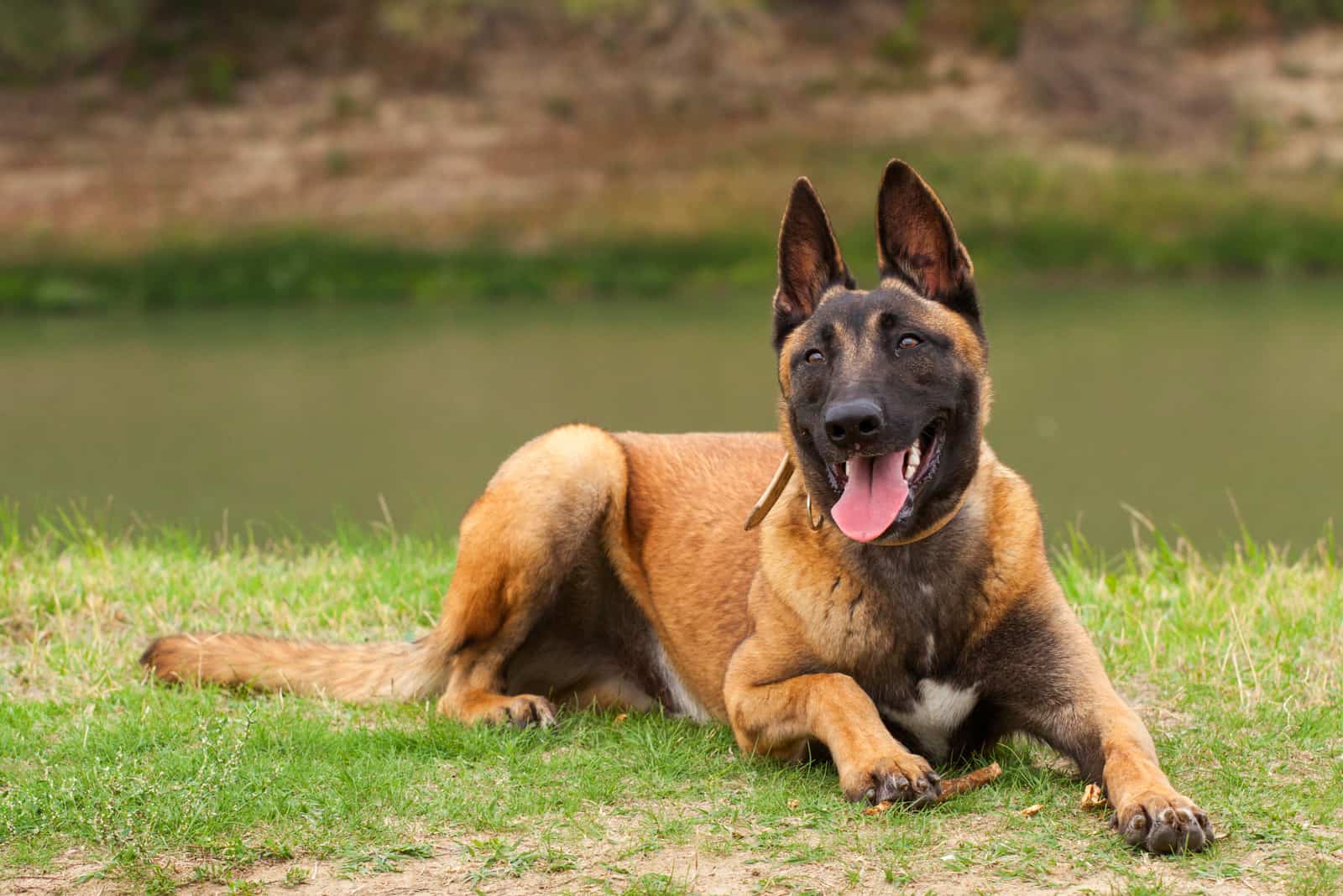
The majority of dog owners mostly rely on kibble and other commercial dog foods, simply because it is incredibly easy and convenient. However, there are so many kinds of kibble that it can sometimes get overwhelming and hard to choose the one that is exactly right for your dog’s needs.
Even when you manage to find the one that your pet likes, it still needs to be complemented with other foods and supplements in order for your Belgian Malinois to get all of its nutritional needs fulfilled.
That is why some pet owners turn to alternatives in order to find the best dog food for their mals. Some people choose to go with raw food and put their dogs on a completely raw diet, while others prefer cooking homemade meals.
Let’s explore why homemade dog food could be your best bet if you want to provide a complete, high-quality, balanced diet for your doggies.
Conclusion: Every Dog Is Different
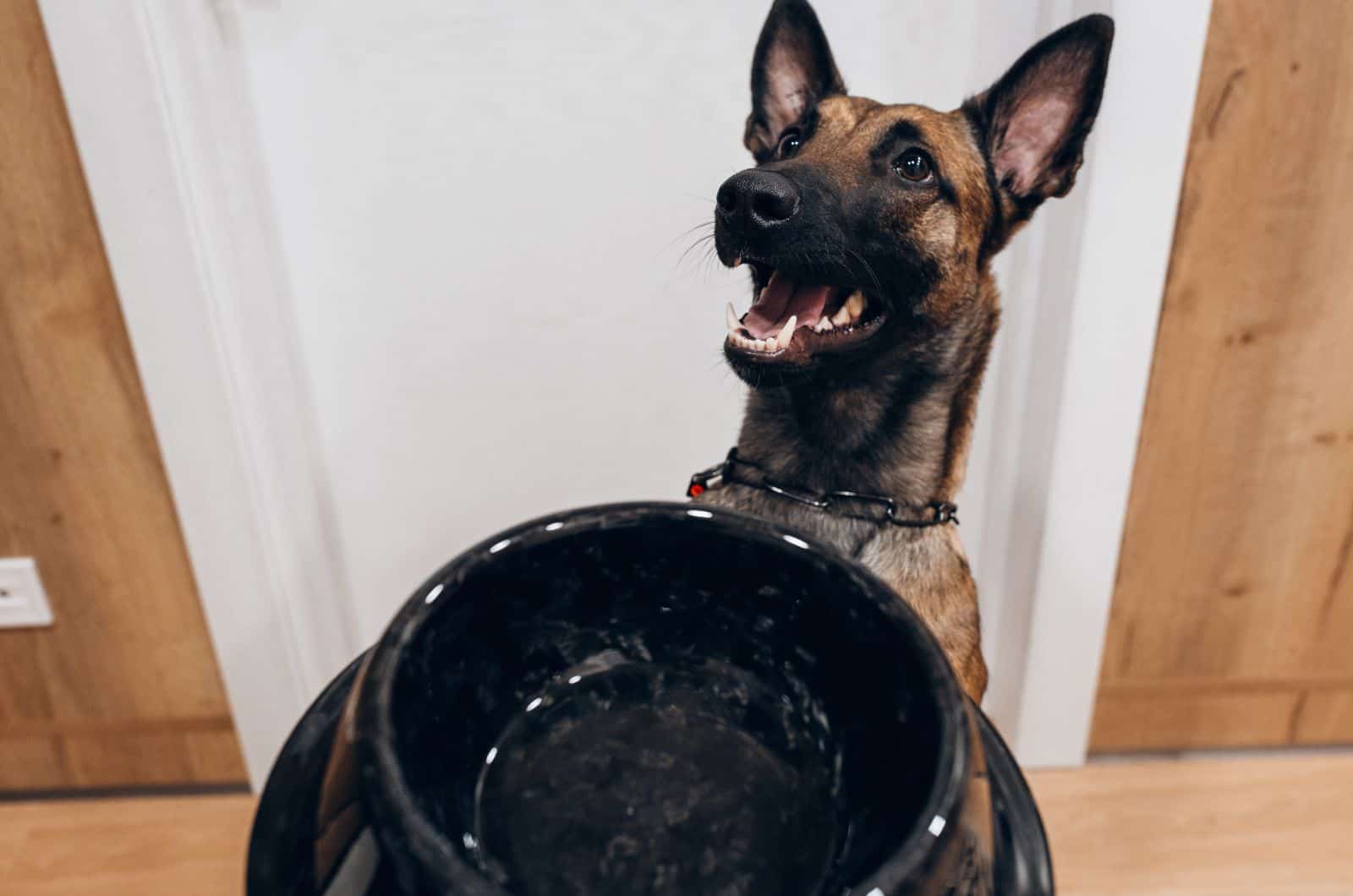
Your dog is unique and has unique dietary requirements. Puppy food is not the same as adult dog food and Belgian Malinois food is not the same as German Shepherd food.
That’s why we can’t stress enough how important it is to consult an expert — a vet or veterinary nutritionist — before creating a plan for their diet.
Take everything you have learned onboard and be ready to notice your dog’s changing needs and adapt accordingly. If you want, you can even create spreadsheets and charts with your dog’s daily intake needs where you can track their progress and make note of any important changes.
Keep track of their weight, their level of activity, their behavior, and all the rest of it. You’d be surprised how much you can learn about your own dog that you’ve never known before!
There is no such thing as a solution that fits everybody, but once you get into the groove of things, cooking should become second nature for both you and your Belgian Malinois.
And as more time goes by, you should start seeing the many benefits of homemade dog food we’ve talked about here. You’ve got this!
Read Next: Kindfull Dog Food Review: A Closer Look At Affordable Pet Food
